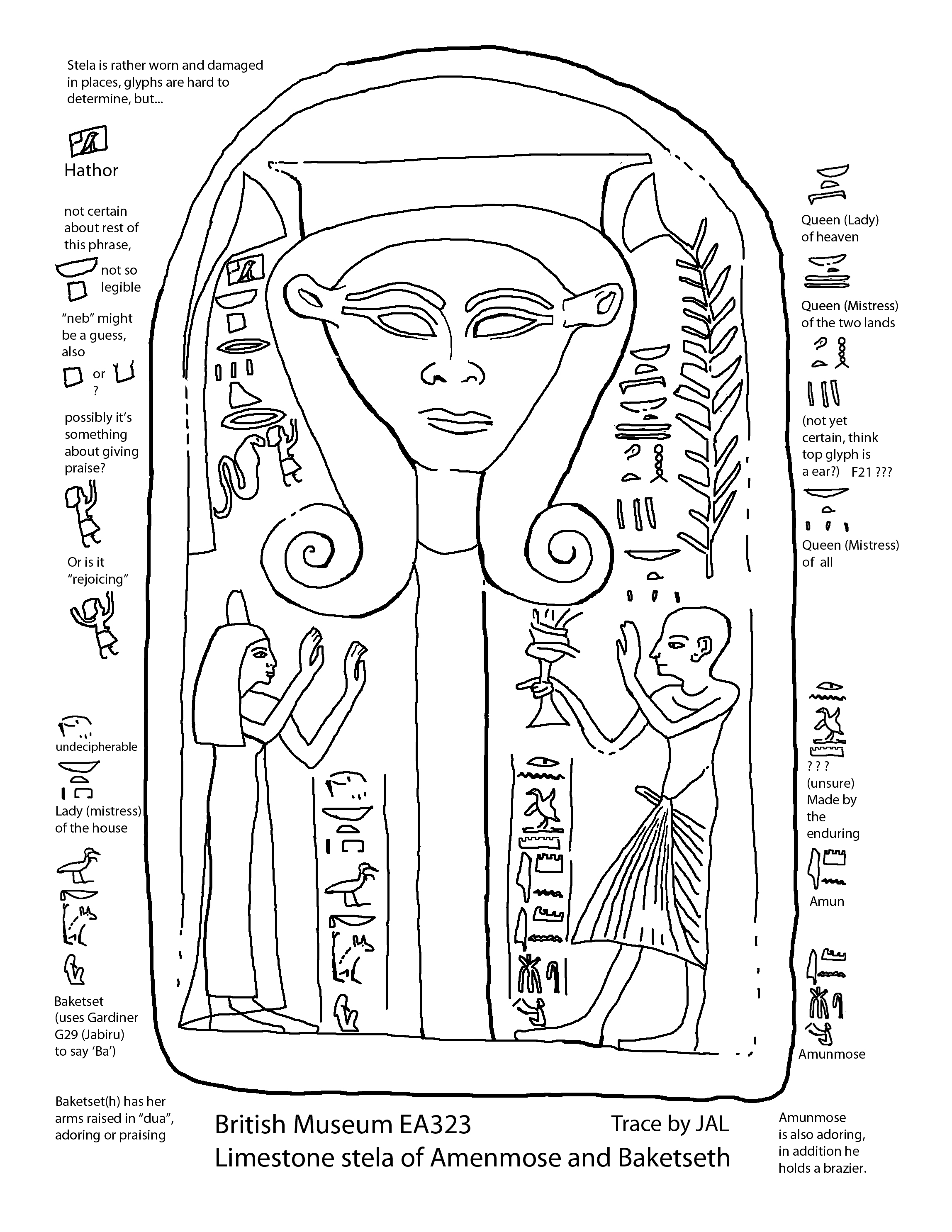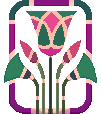
Sunday, May 10, 2015 A
Happy Mother's Day and Another Scene with Hathor
7:25am
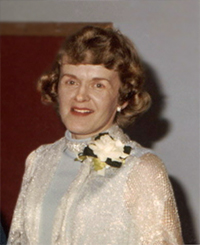
Mom, 1978
So my mother sort of withdrew. Which is sad. Meanwhile, I'm glad my mother didn't do to me what her mother did to her. When I came out to my mother in the late 70s, my mother's affection never changed. Gay or straight made no difference to her. So Friday morning, alongside the "Bob and Sheri" radio call in speakers speaking of their mothers, I was having some tears over that.
And then I got to thinking about what could have made my maternal mother so anxious. Was living through the depression very hard? It might well have been. She was born here in the States. Her mother arrived in the States from Bohemia when she was only eleven in 1880. My mother did have warm memories of her grandmother, however. She spoke of when she was a child being hugged by her full figured gramma.
When I got home after work Friday evening, I returned to working on the latest Hathor trace. I found my subject in Bierbrier's _Hieroglyphic Texts from Egyptian Stelae_, part 12_. I didn't care for the museum's trace, so I worked from a scan of a photo in the Bierbrier book:
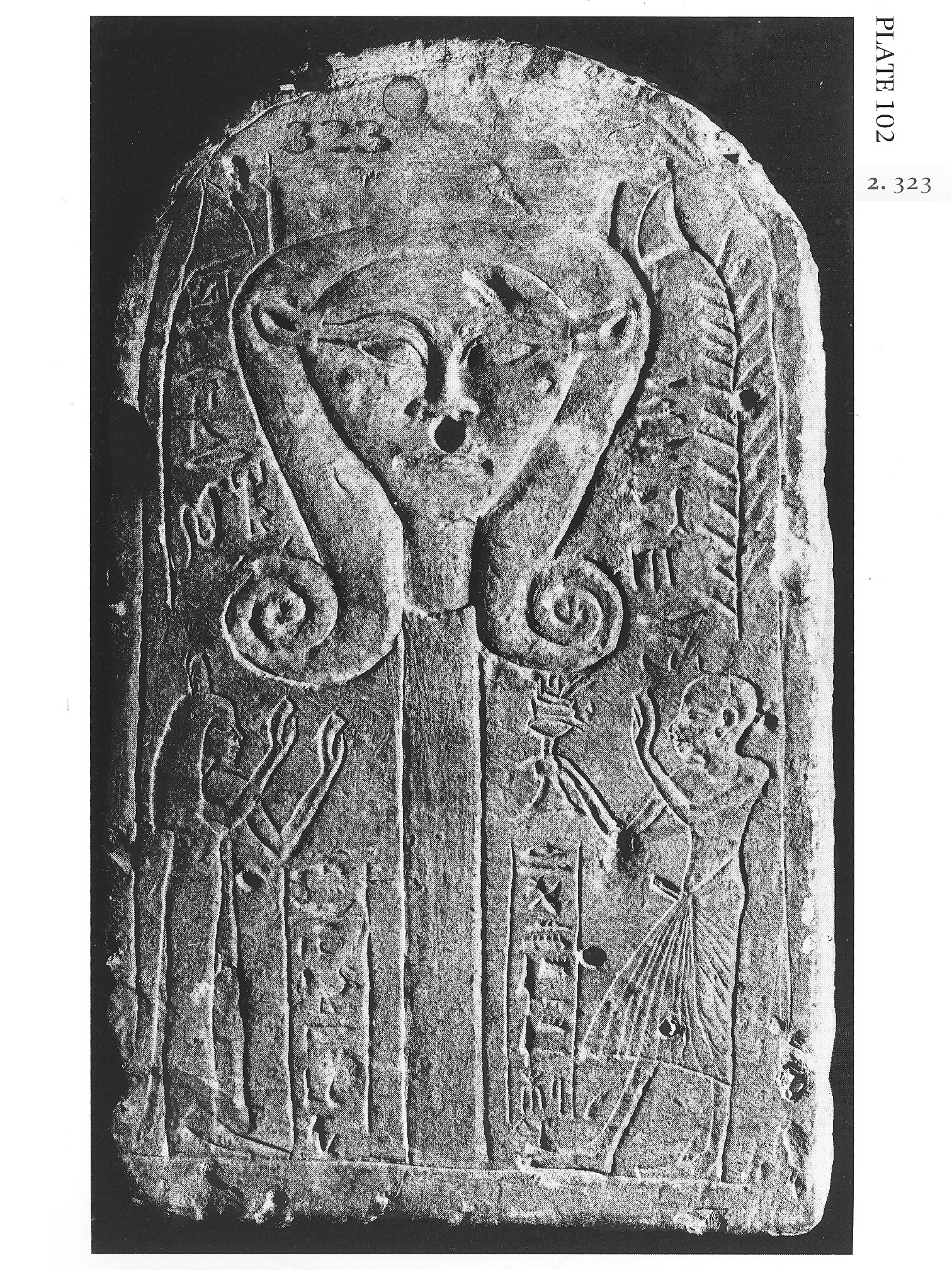 Limestone stela of Amenmose and Baketseth Egypt, Upper Egypt, Abydos Ramesside period Height: 42.7 cm, Width: 26 cm Photo © The Trustees of the British Museum |
The museum description is: "Limestone stela of Amenmose: there is a large, Hathor-headed sistrum in the centre of this round-topped stela flanked by lotus flowers around the head. In the lower right-hand corner the sculptor of Amun, Amenmose, stands in adoration holding a brazier. On the left the lady Baketseth stands with her arms raised in worship. There are several gouges and areas of wear on the surface of the stela and the edges are damaged in places. The wear on the face of the Seth animal may not necessarily be intentional."
The many gouges and worn spots made tracing and translating difficult. But I gave it my best shot:
Upper Left, very uncertain. After a fairly clear Hathor glyph, the next two are quite worn, and my choices are practically guesses. The third glyph may even be 'ka' arms, rather than the 'p' square. I'm sure the next is a phrase, but I haven't as yet come across its like. (I have another highly recommended hieroglyph book on order!) The ending glyph may either be the 'dua' (adoring) or the 'hai' (rejoicing) glyph. The museum tracer chose the rejoicing glyph, but it looked more to me like the adoring glyph.
Lower left:
A bit of uncertainty with these glyphs, too, because the top one(s) are simply undecipherable. Then we have the standard "lady of the house" title, and her name, Baketset. The ancient scribe used Gardiner G29, Jabiru bird, to say "Ba", or "soul". Perhaps her name means "Soul of Set", or that the god Set formed her Ba?
Lower Right:
I might have worked out something here. I found for the eye and 'n' glyph, "ari-en", "made by". "Men" glyph (senet game board) usually means "enduring" or "eternal", and then the glyphs for the god Amun. So perhaps this is "Made by the eternal Amun", a reference to the maker of Amun's ba?
Amunmose's name means "Amun is born".
Printable version available

Sunday, May 10, 2015 B
The Other Side of Research
11:32am
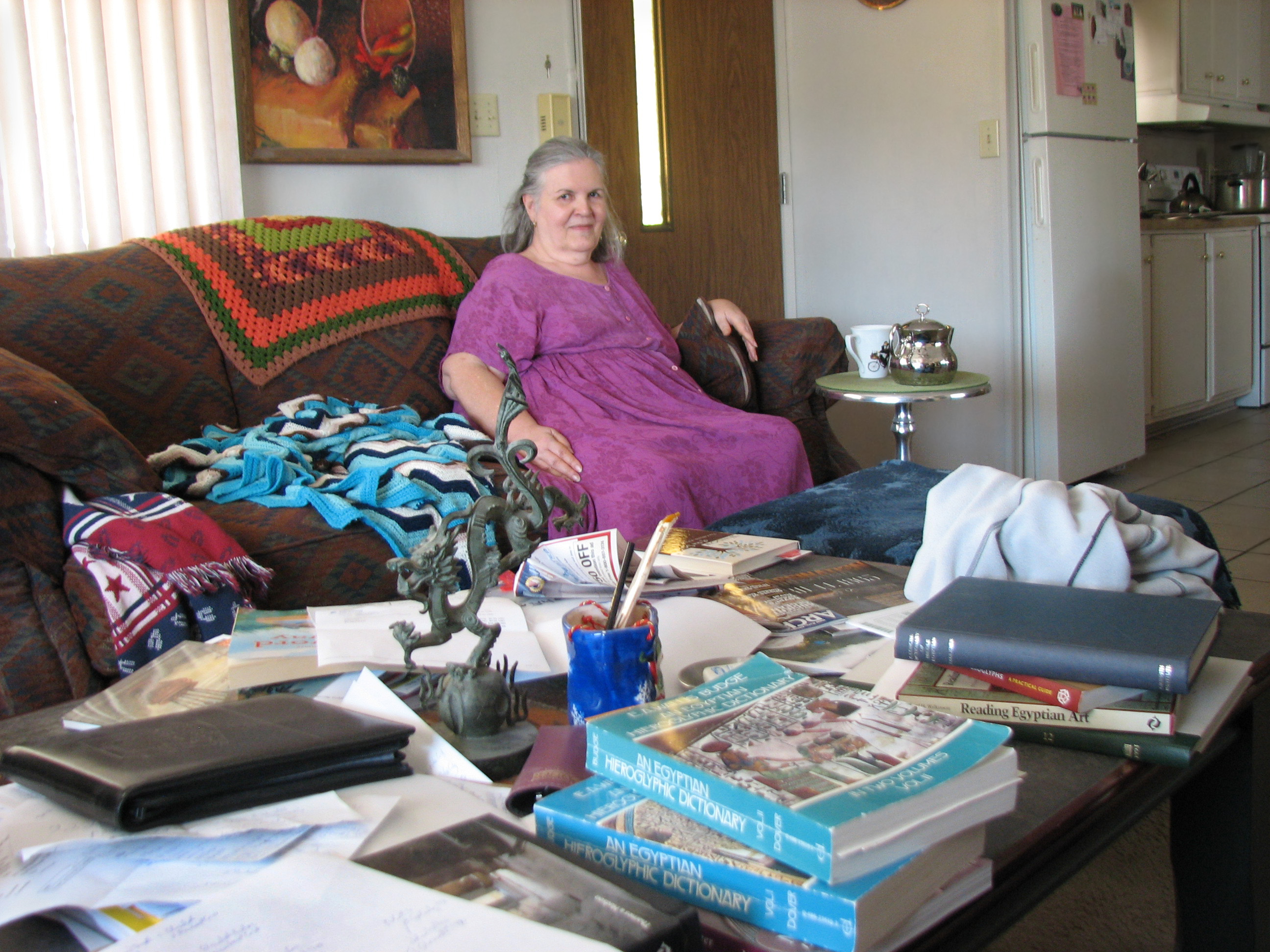
Not ALL of that is my mess. Some of it is books Julia's reading and stuff from her genealogical research. You can see our new teapot, too.
Time to shovel out before the work week begins. :)
